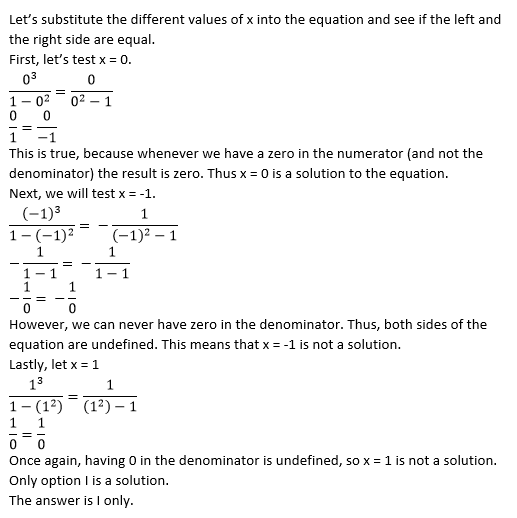How to find out when an equation has no solution
Help Questions
SAT Math › How to find out when an equation has no solution
There is no solution
3
–3
1
–1/2
Explanation
Solve:
No Solution
Infinitely Many Solutions
Explanation
First, distribute the 
Add 6x to both sides.
This is false for any value of 
Solve 
No solutions
Explanation
By definition, the absolute value of an expression can never be less than 0. Therefore, there are no solutions to the above expression.
Find the solution to the following equation if x = 3:
y = (4x2 - 2)/(9 - x2)
0
6
3
no possible solution
Explanation
Substituting 3 in for x, you will get 0 in the denominator of the fraction. It is not possible to have 0 be the denominator for a fraction so there is no possible solution to this equation.
None of the other answers
Explanation
A fraction is considered undefined when the denominator equals 0. Set the denominator equal to zero and solve for the variable.
I. x = 0
II. x = –1
III. x = 1
I only
II only
III only
II and III only
I, II, and III
Explanation
, 
In the above graphic, approximately determine the x values where the graph is neither increasing or decreasing.
Explanation
We need to find where the graph's slope is approximately zero. There is a straight line between the x values of 


Solve:
Explanation
First, distribute, making sure to watch for negatives.
Combine like terms.
Subtract 7x from both sides.
Add 18 on both sides and be careful adding integers.






































